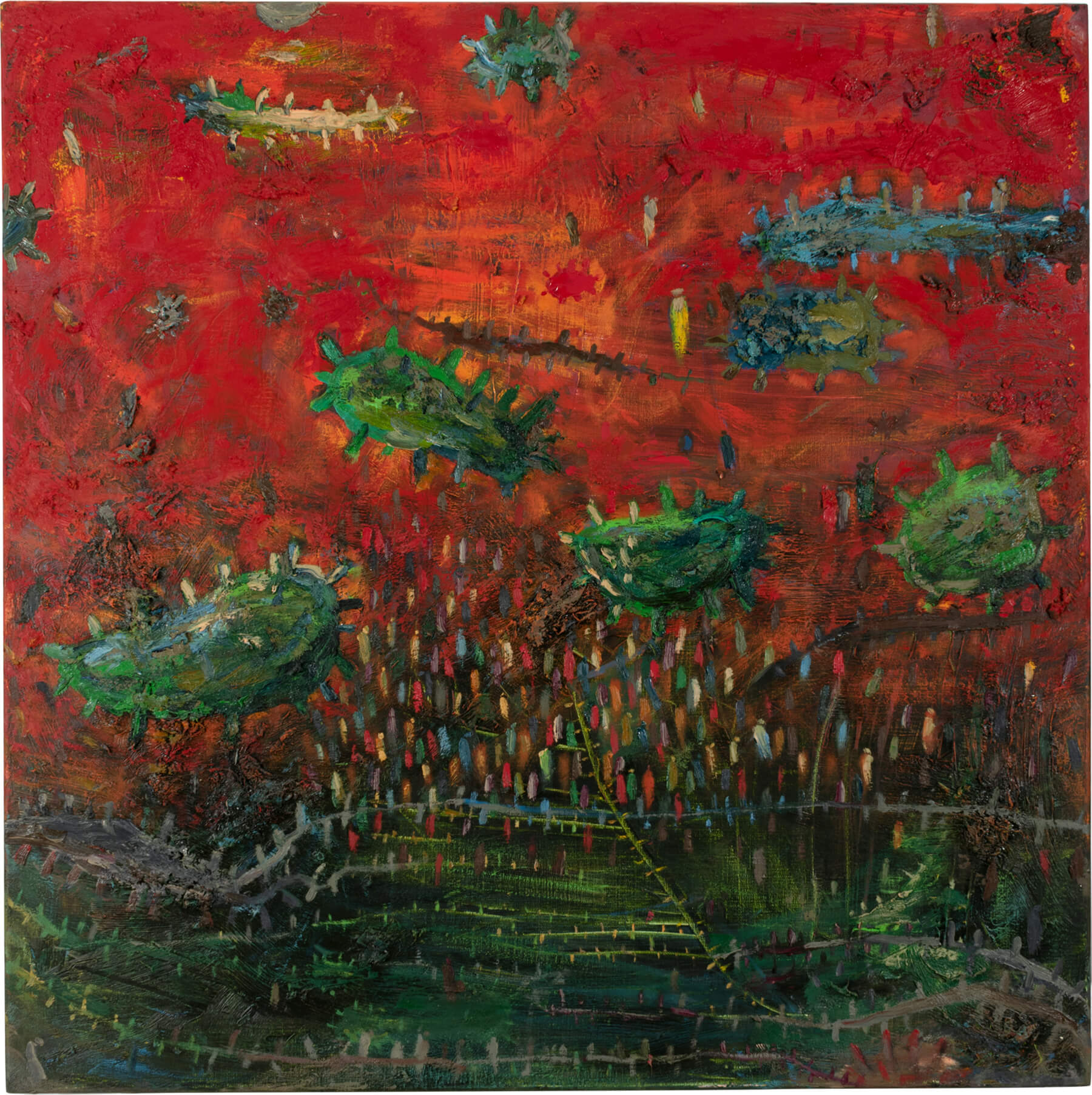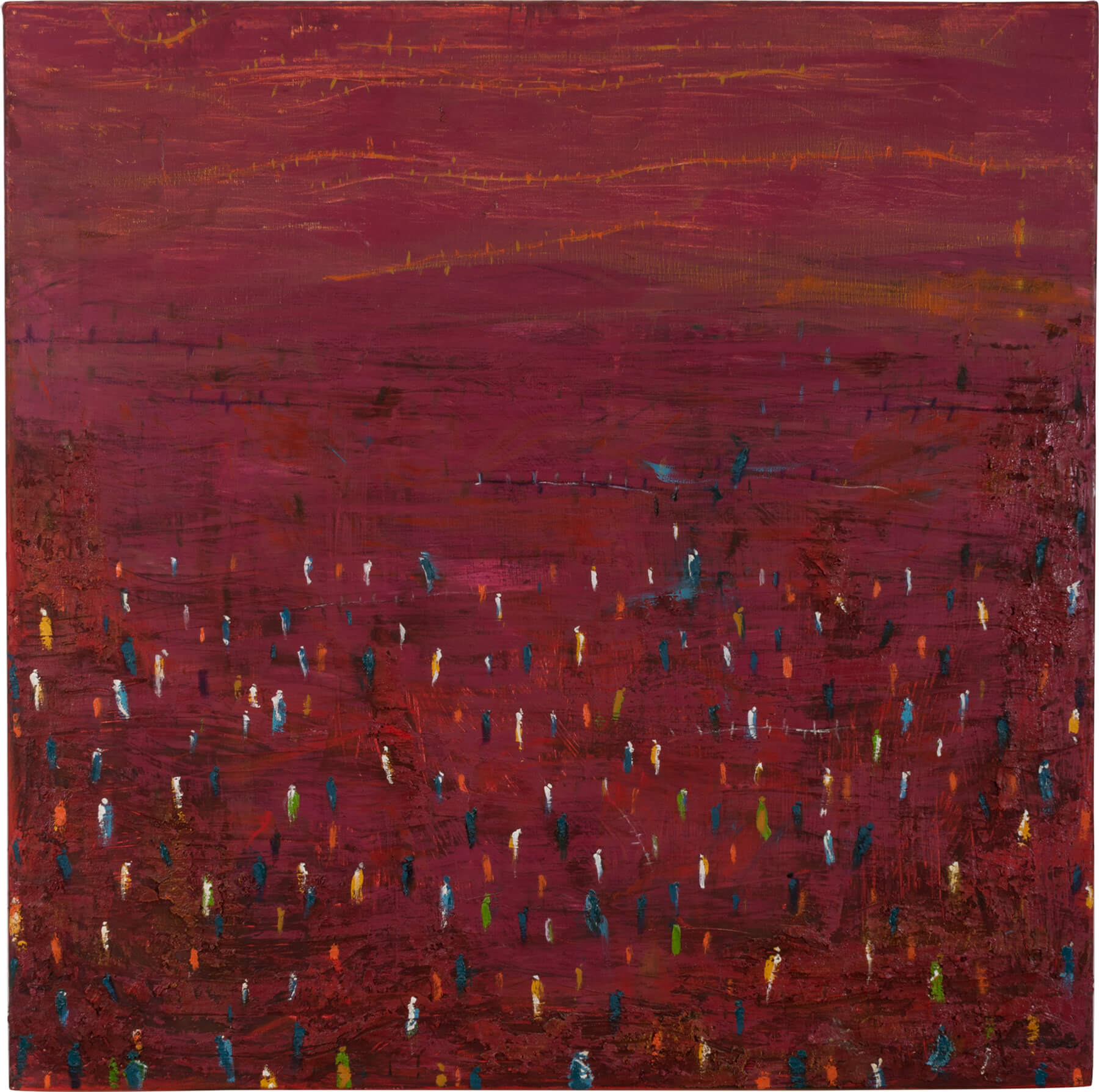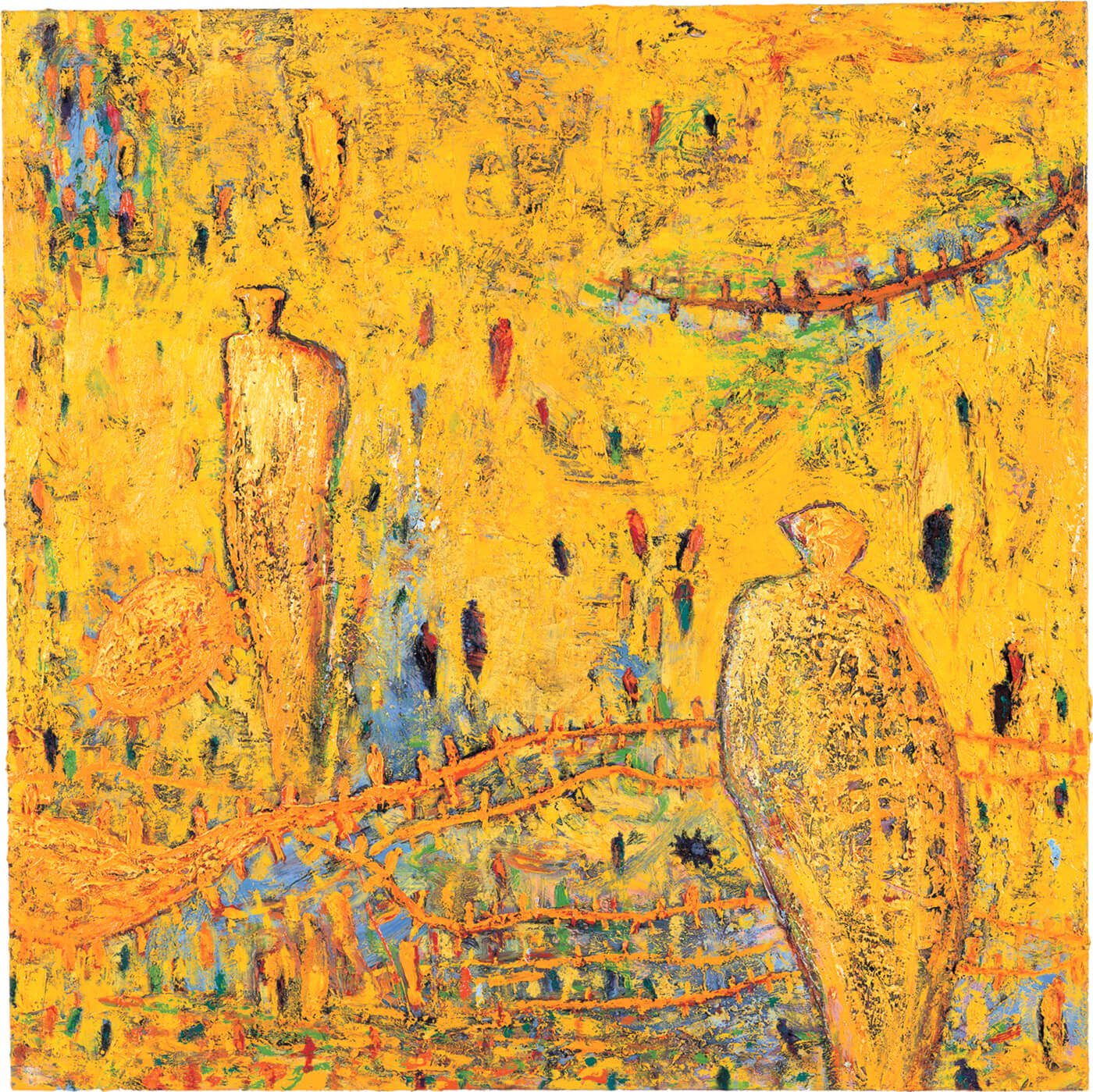#TOUR
Ebene 1 | NINA RÖDER
Michelin Kober
Born in Herrenberg in 1968, living in Stuttgart
Line by line, Michelin Kober draws slender ink lines, freehand and yet not with a free hand, as the spontaneous gesture remains alien to her. Gradually, a straight line of diluted ink is laid on the page from left to right or from top to bottom. The next follows it, joins on to it, absorbing the fine particles of the pigment – wet-on-wet over an only delicate dry edge. Many more follow and move, filling the space, towards a thin strip of uncovered paper.
In the contemplative ritual of repeated action, the lines are gradually concentrated, layer by layer, into a picture surface. Colour progressions range from light, lucid tones to a saturated black of unfathomable depth. In between, a thin strip of the uncovered paper base remains, which shines from within itself into the visual space. And so the lines seem to want to pour all the calm and concentration, all the energy and time that has gone into them, into the mysterious radiance of a light in their midst.
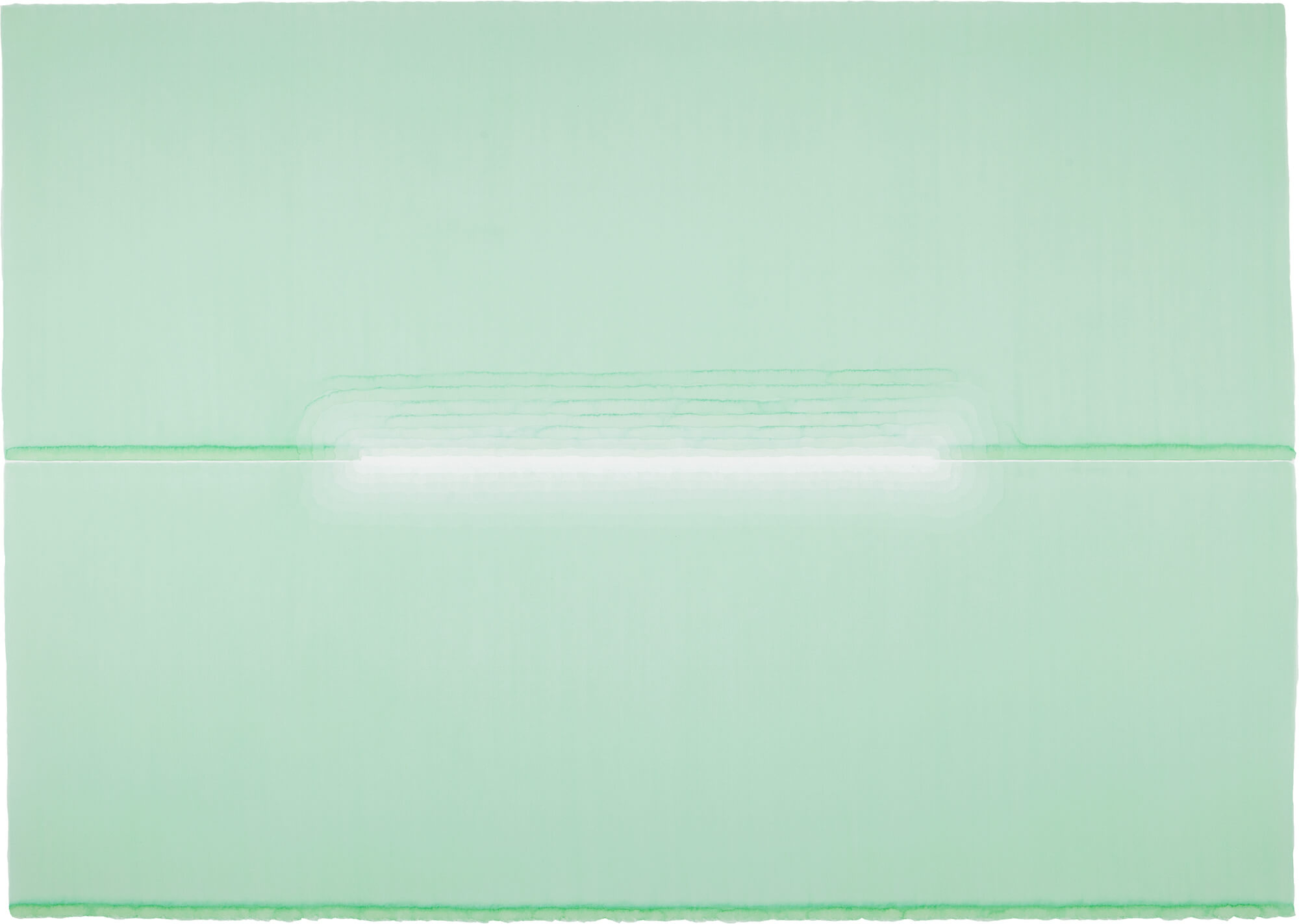
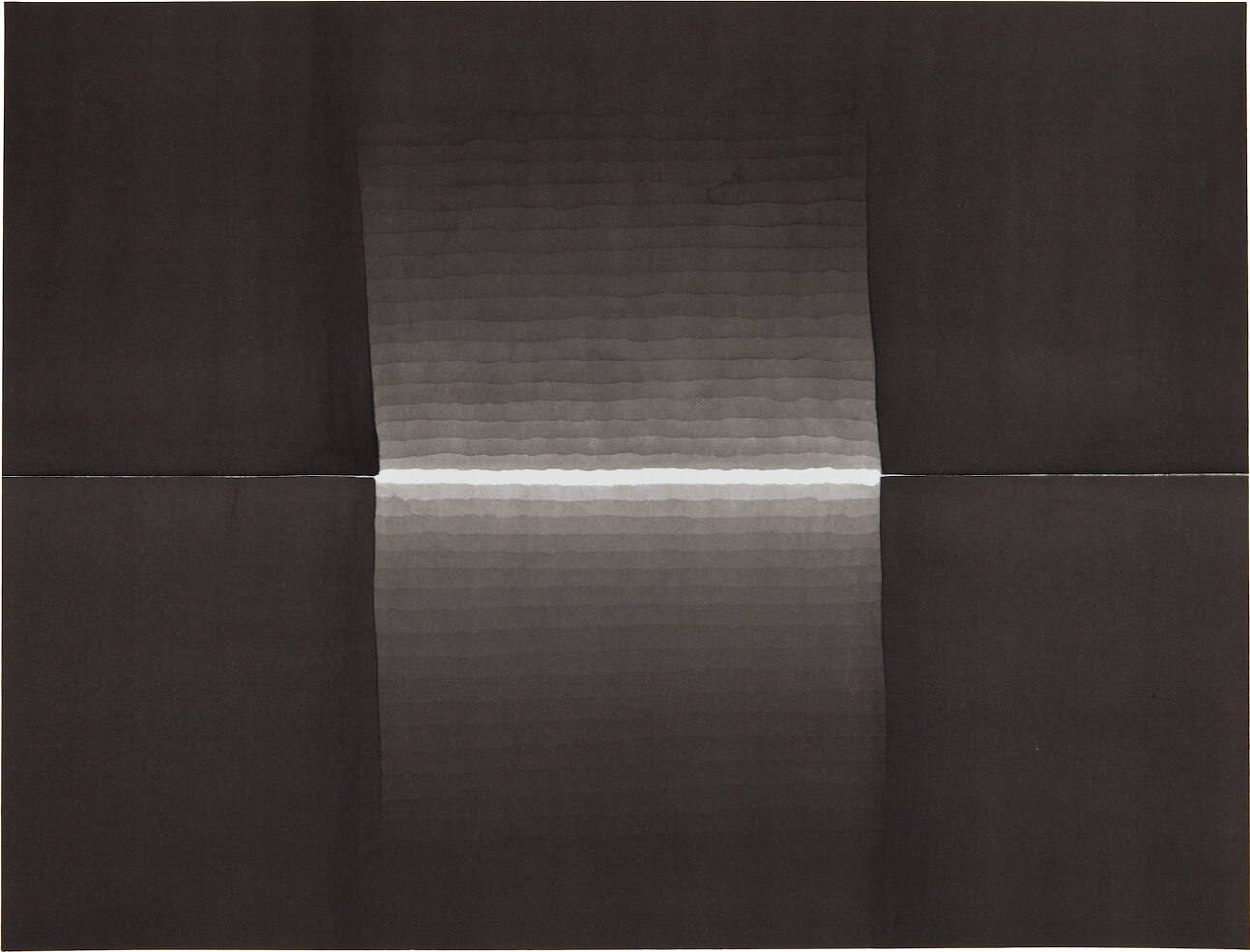
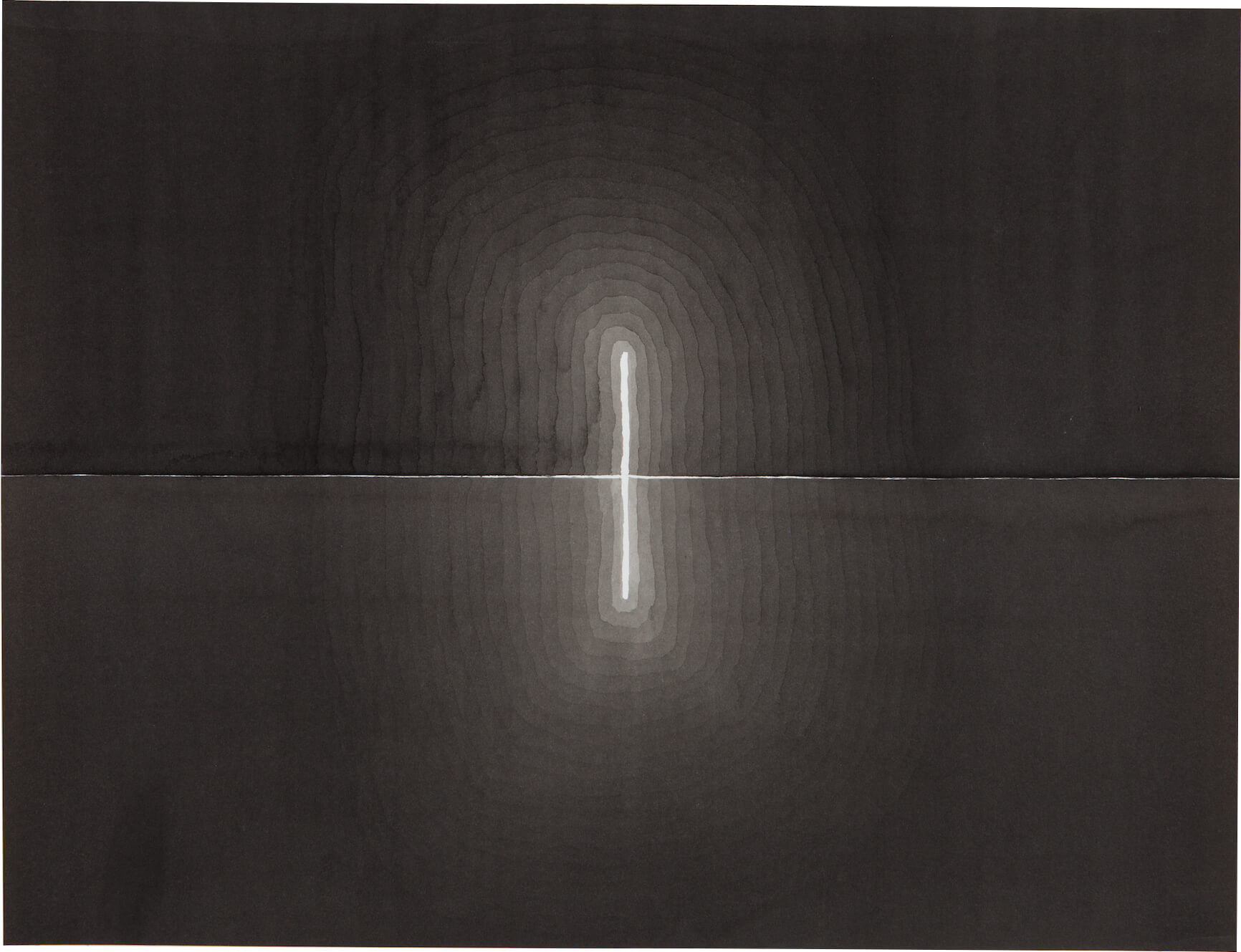
Thomas Müller
Born in Frankfurt am Main in 1959, living in Stuttgart
Which of the lines was the first on the paper? Nobody knows. Starting somewhere, you follow the line with your eyes, recognise a certain melody in its oscillation and see how strongly it changes direction. You observe how one line runs towards the others, keeps a clear distance or approaches them at obtuse or acute angles. Then sometimes they cross or run alongside one another for a while, tracing their paths side by side and yet not in parallel. Some recede under a correcting white. In others, the oil from the colour penetrates into the paper. Little by little the view changes – enriched by the discovery of a pictorial language – looking at the whole and starting to grasp its complexity. And you know that you will have to engage with it anew when you come to the next drawing by Thomas Müller.
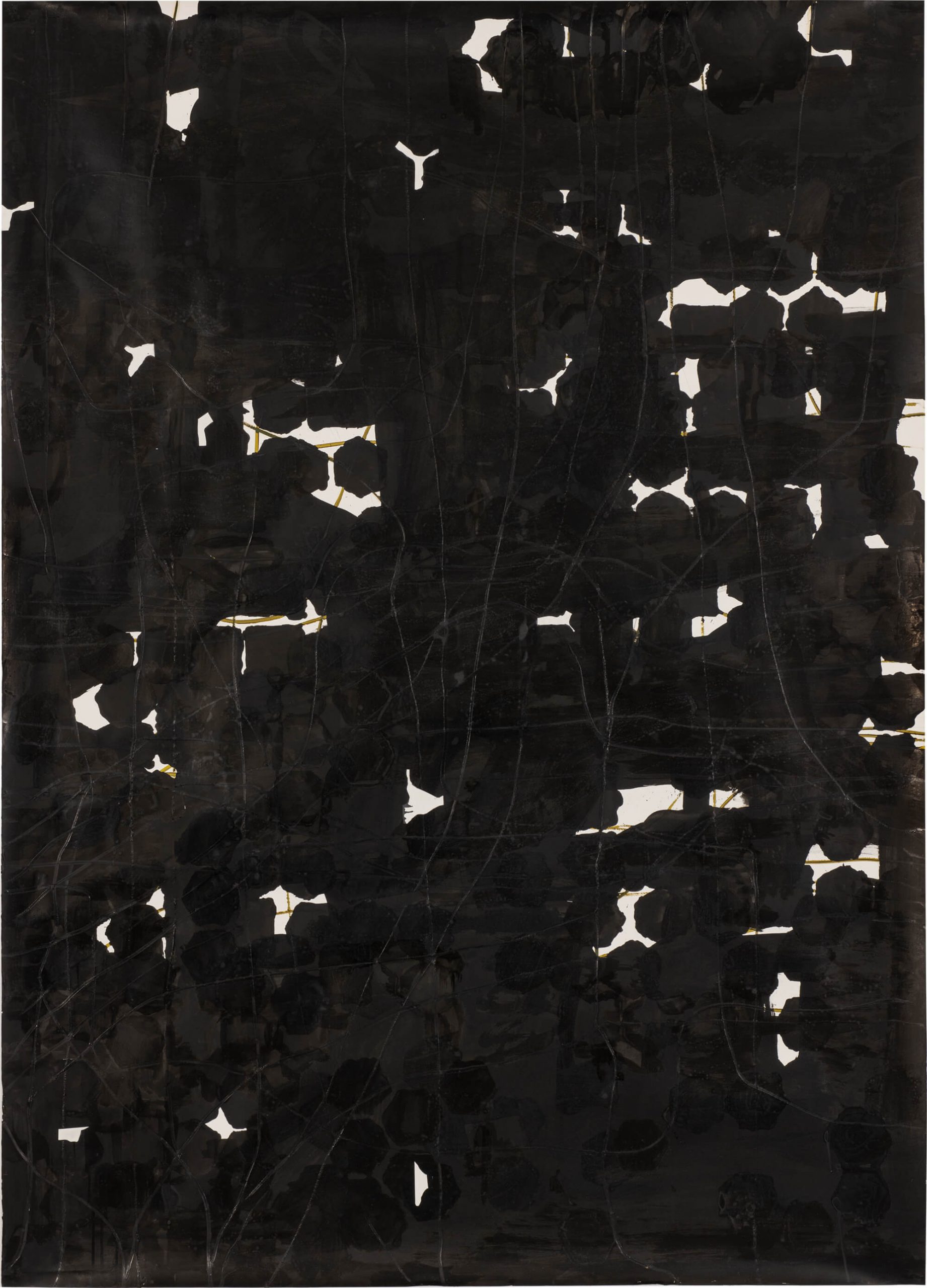
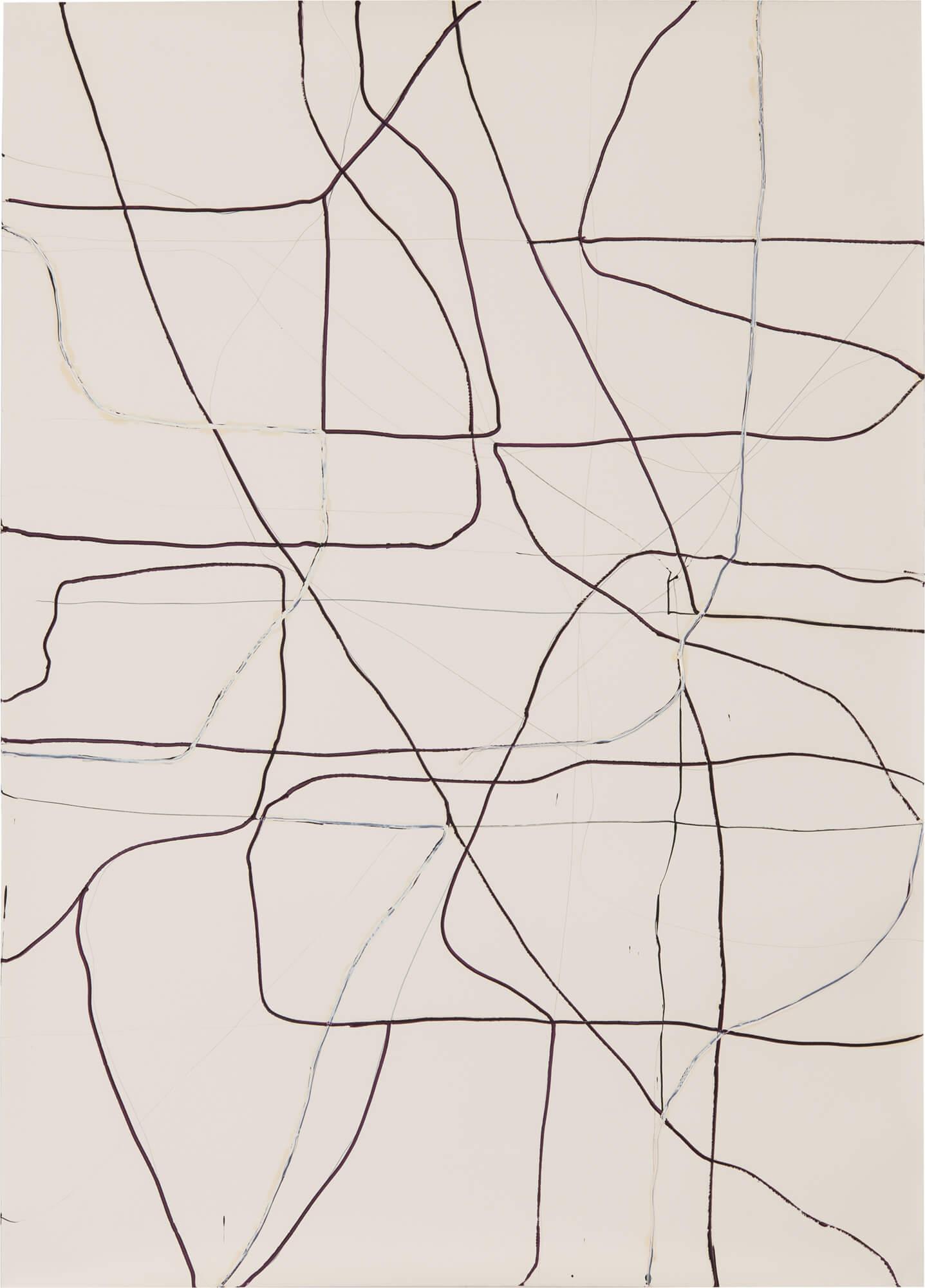
Michelangelo Pistoletto
Born in Biella in 1933, living in Turin
Three image panels by Italian artist Michelangelo Pistoletto, one of the main exponents of Arte Povera, comprising black screen printing on mirror. The outer panels show the profiles of his twins, turned towards each other; between them at eye level in the otherwise empty space, a small dot. It remains open to interpretation whether the two women portraits are looking at each other or whether they are looking at the focused centre. When you move towards the piece, your own reflection appears. You see yourself observing and can thus reflect on the very act of observing. At the same time, you add to – complete – the piece as Pistoletto hopes, by linking it to your own (living) environment and reality.
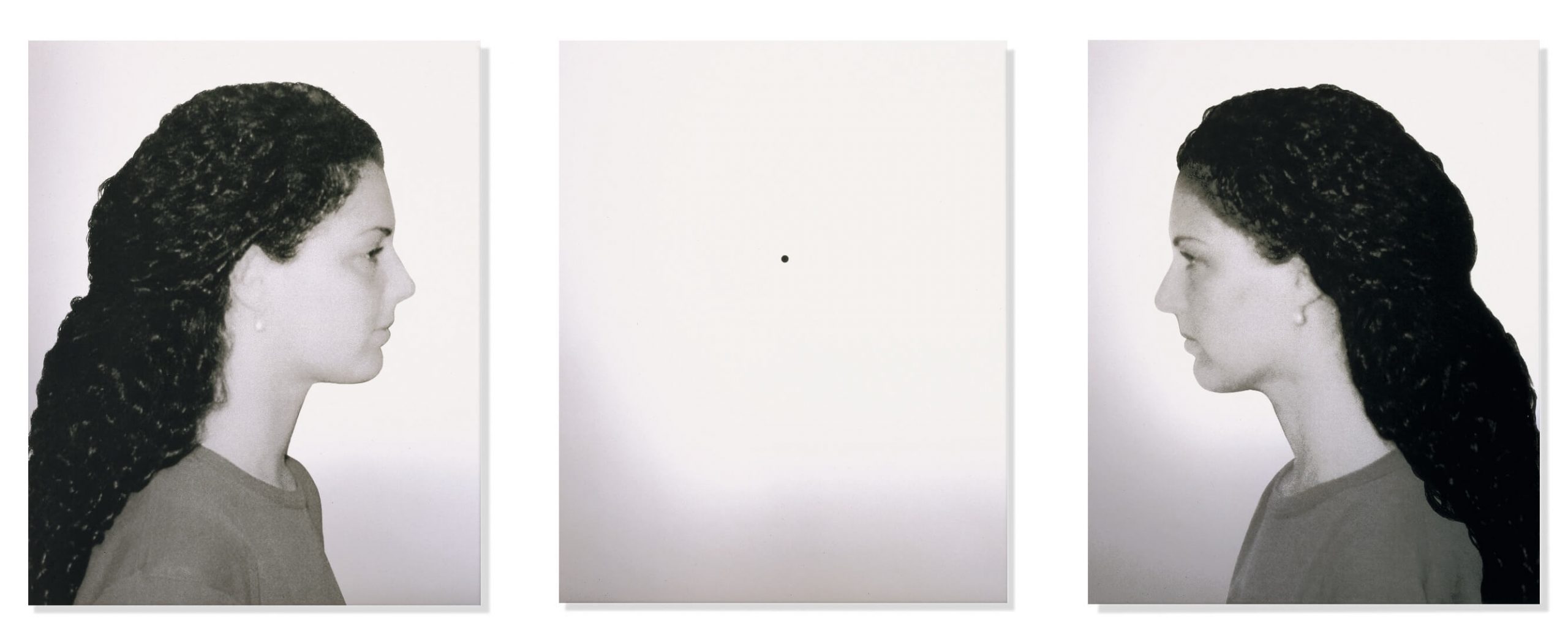
Arnulf Rainer
Born in Baden near Wien in 1929, living in Enzenkirchen (Upper Austria) and on Tenerife
Two drypoint images by Arnulf Rainer from 1978: Depicted in the background are photographs of the artist in Posen, which are unclear or appear cloudy. Above this are numerous lines incised into the plate with an etching needle, both powerfully and in rapid strokes. On one sheet they follow the posture, on another they form a dense halo around the head. Alongside this is a painting by the artist from 1999, with a fleetingly sketched face in the centre, surrounded by coloured veils. What better way than this juxtaposition to demonstrate that Arnulf Rainer’s overpainting gesture is fundamentally not only to conceal and erase but also an act of accentuation and examination?
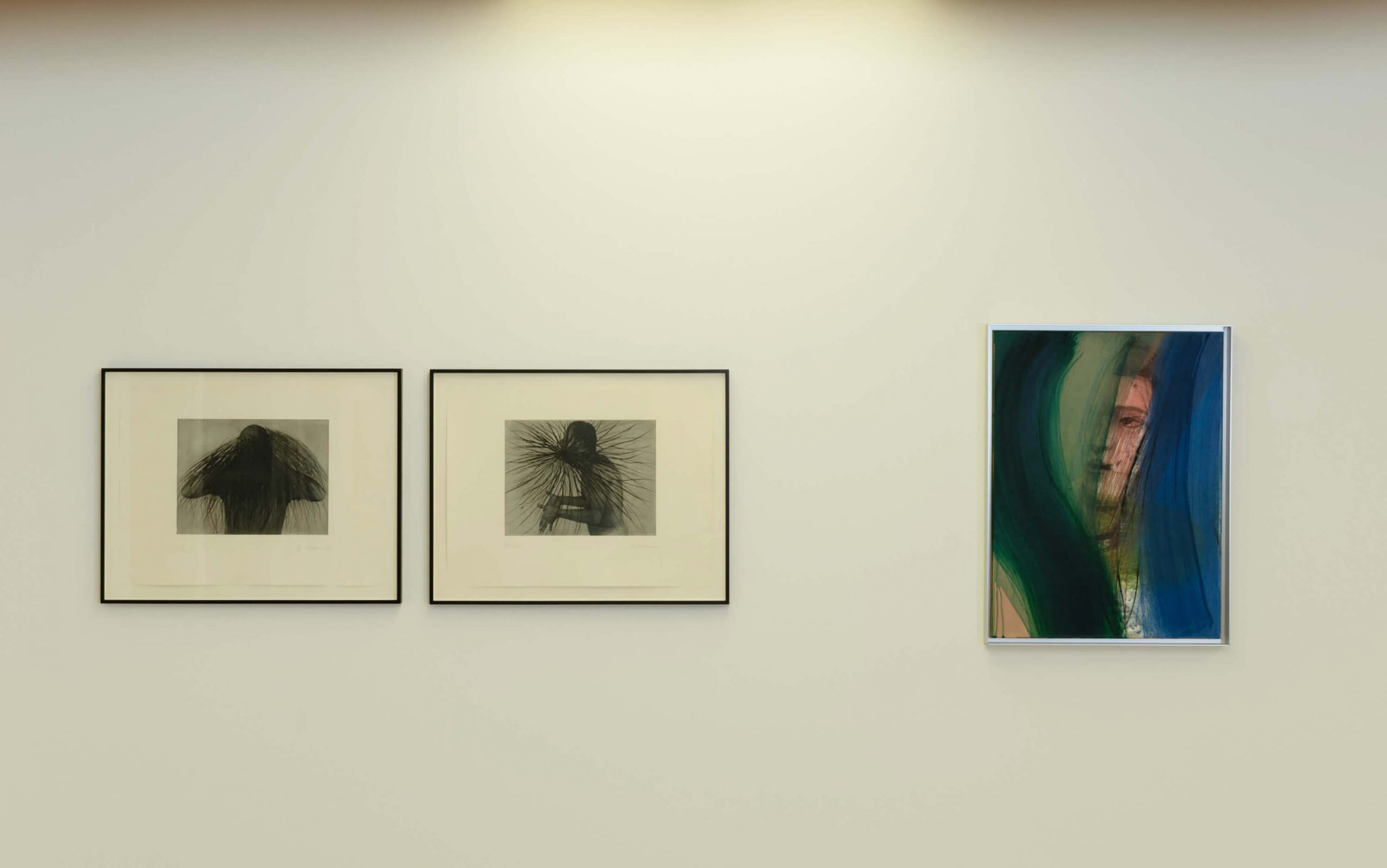
Andy Denzler
These works are portraits or representations of people in an indefinite setting or surrounded by landscape. You see them in action, remaining in movement, captured in snapshots. In his pictorial rendering of the motifs, Andy Denzler initially follows a concept characterised by the realistic but then takes the characteristic and crucial step for his work: creating horizontal tracks in the top layer of the still wet oil paint, as if he were blotting out anything accidental from the present, elevating the image to another, abstract level of time and reality.
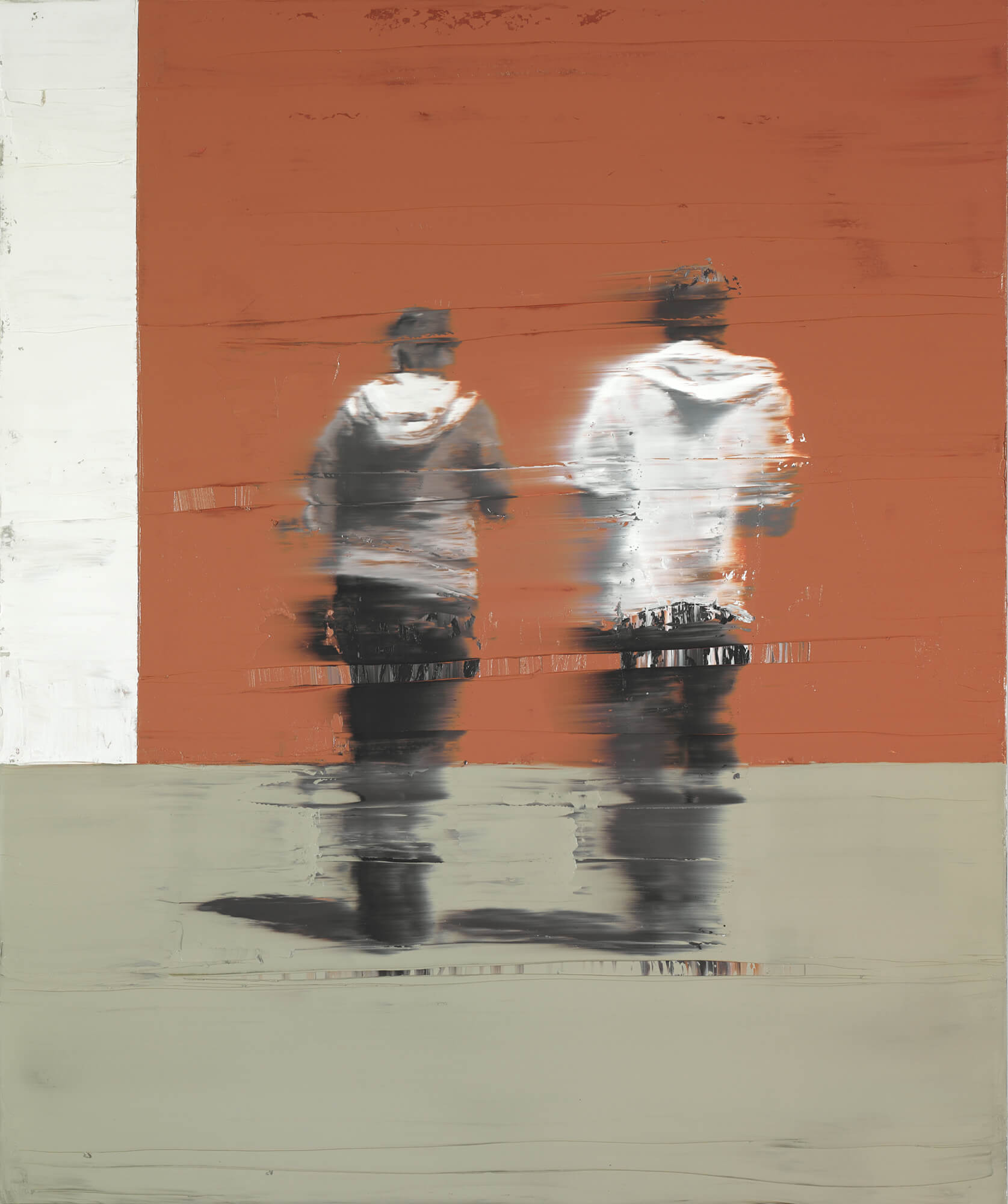
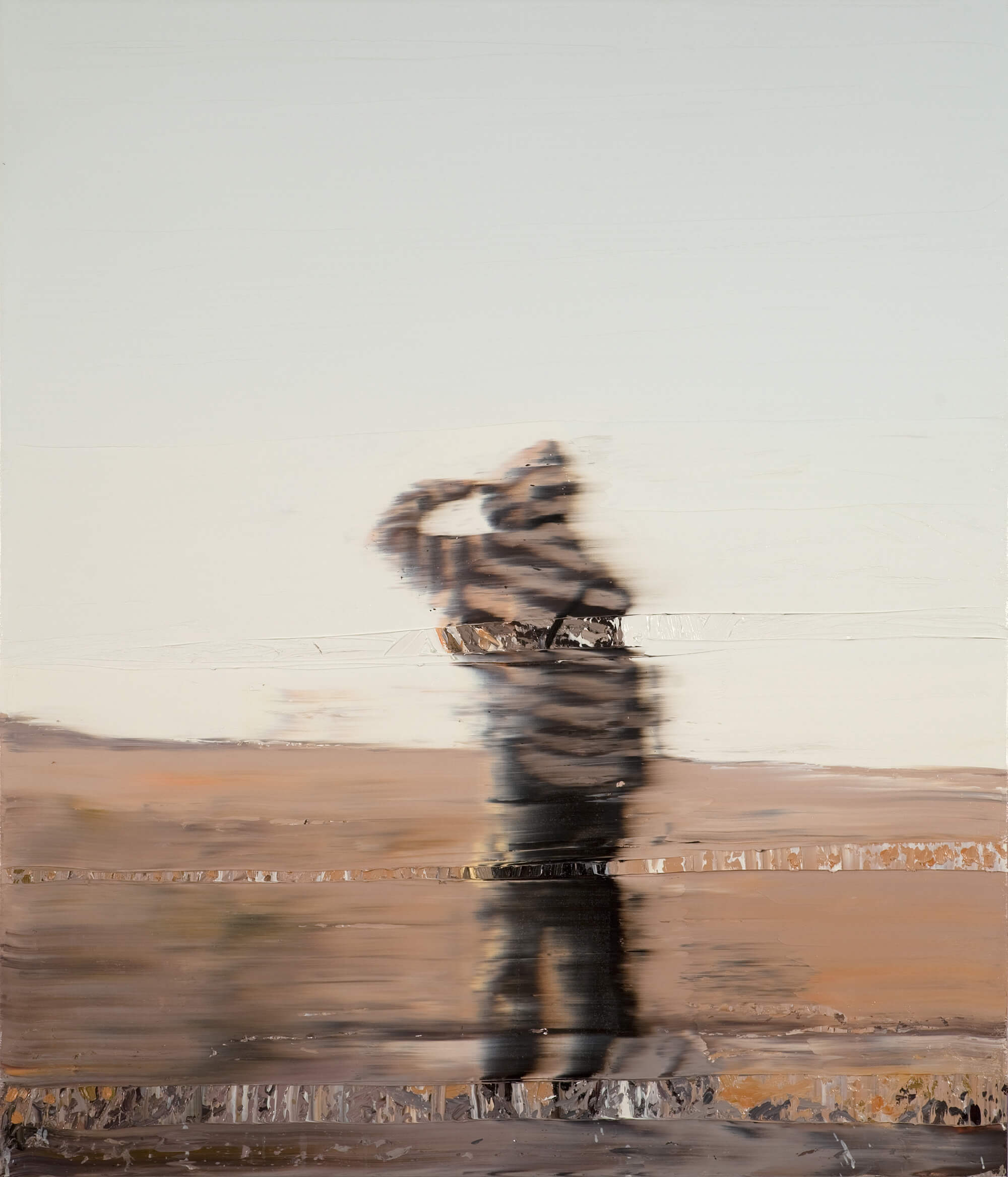
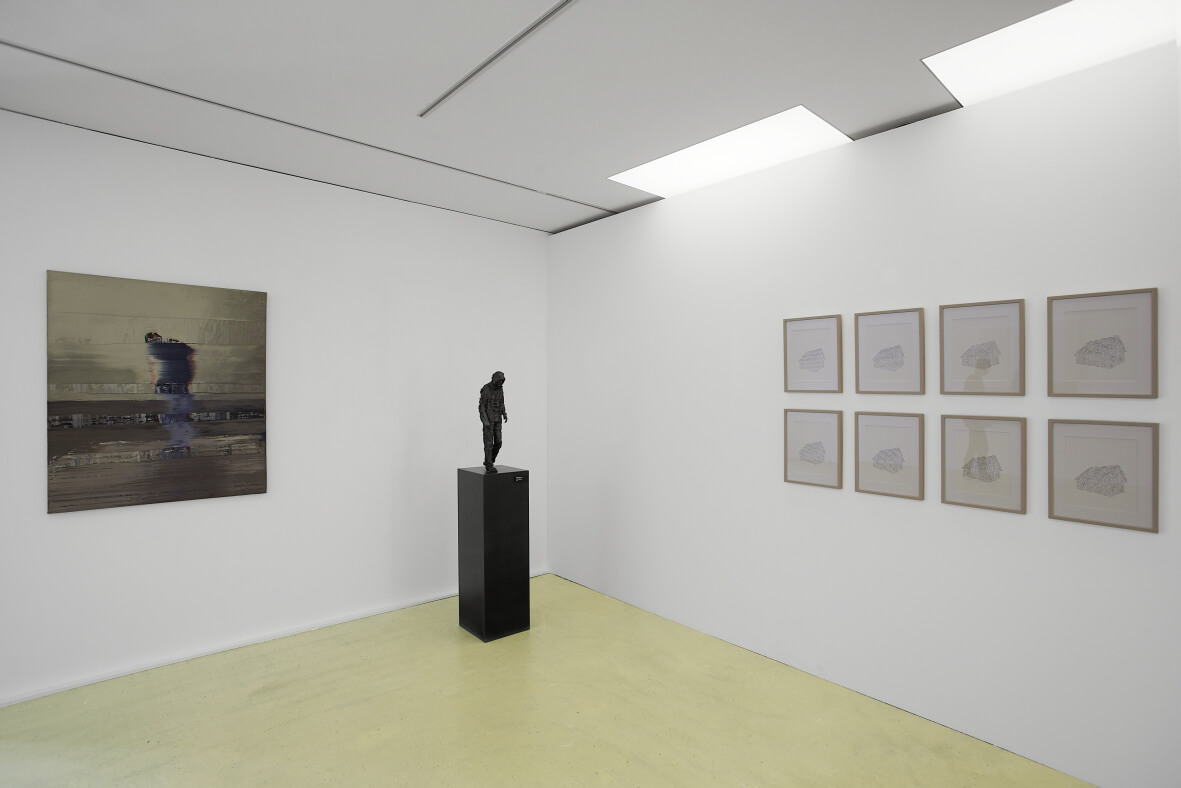
Erdmut Bramke
The stroke betrays the movement of the hand applying the paint to the canvas: a short stroke with the broad brush, no impact. The paint is diluted, regardless of dark or light colouring, always soft. An approach repeated many times, stroke by stroke, layer by layer, creating a dialogue in the specific artistic setting, condensing in the centre of the image or producing a (dark) clearing in the internal space. The works produced by Erdmut Bramke in the mid-1980s differ from her earlier works, which are characterised by a linear, progressive style – at that time often in the direction of reading, from top left to bottom right – and which are reminiscent of her much-quoted phrase: she writes her pictures. The knotted structure now resolves into a shimmer that fills the picture, that creates space for an idea, an idea of summer or of the Forest of Fontainebleau.
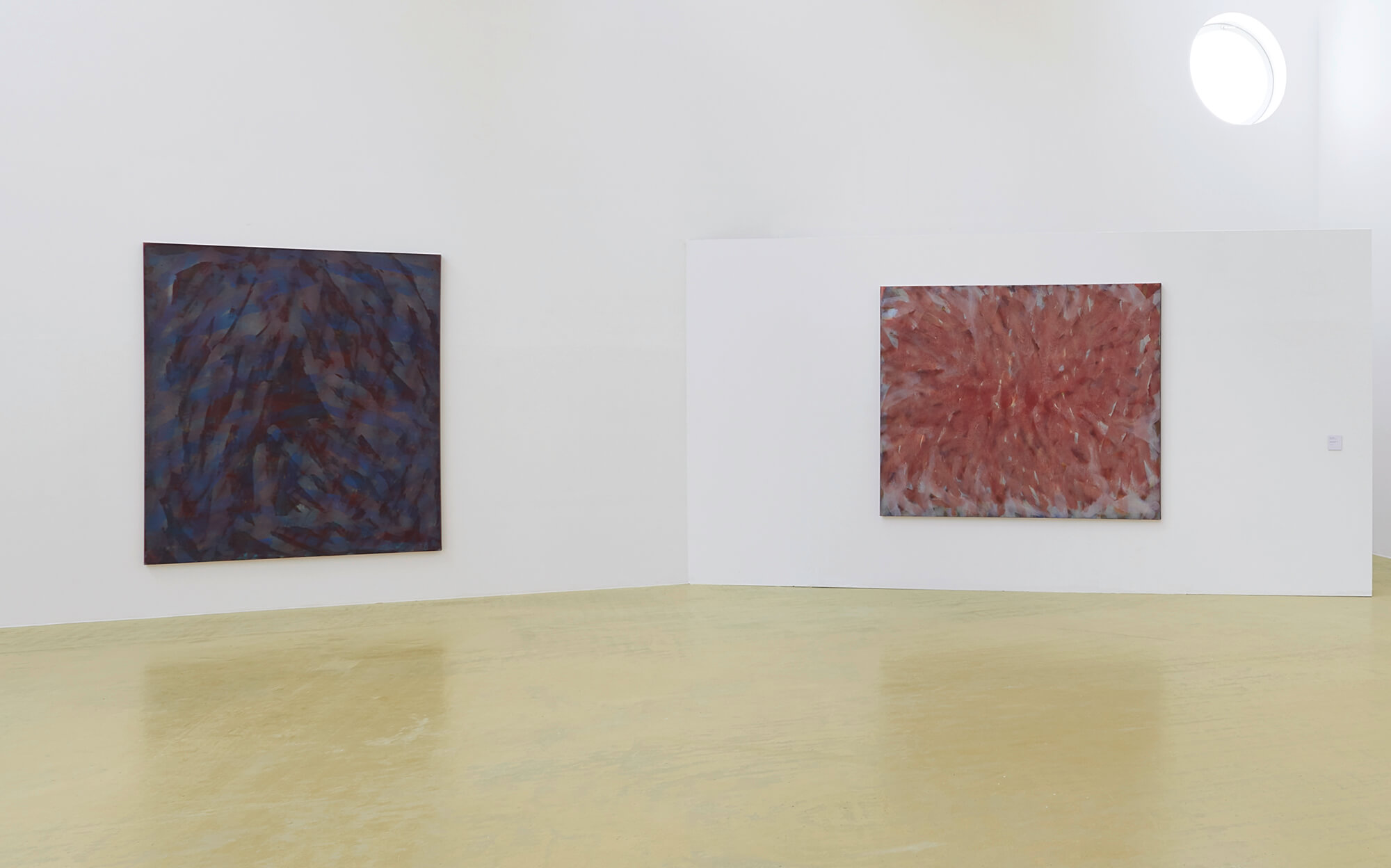
Spandita Malik
Born in India in 1995, living in New York
The women are not allowed to leave the house. They remain trapped at home by their husbands or fathers. Or fear compels them to live in isolation in their rooms – fear of violent attacks, just because they are women in India. They earn a small income from traditional embroidery, for which their villages in Uttar Pradesh, Rajasthan and Punjab are renowned.
Artist Spandita Malik (*1995), who comes from India and lives in New York, visited the women. The project to create a documentary series of photographs evolved into a collaborative project. Spandita Malik had the captured portraits printed on a fabric that is typical of the region and give them back to the women with a request to embroider them according to their own ideas. The series of works is entitled Nā́rī, which is Sanskrit for “woman” or which can equally denote a female object or mean “sacrifice”.
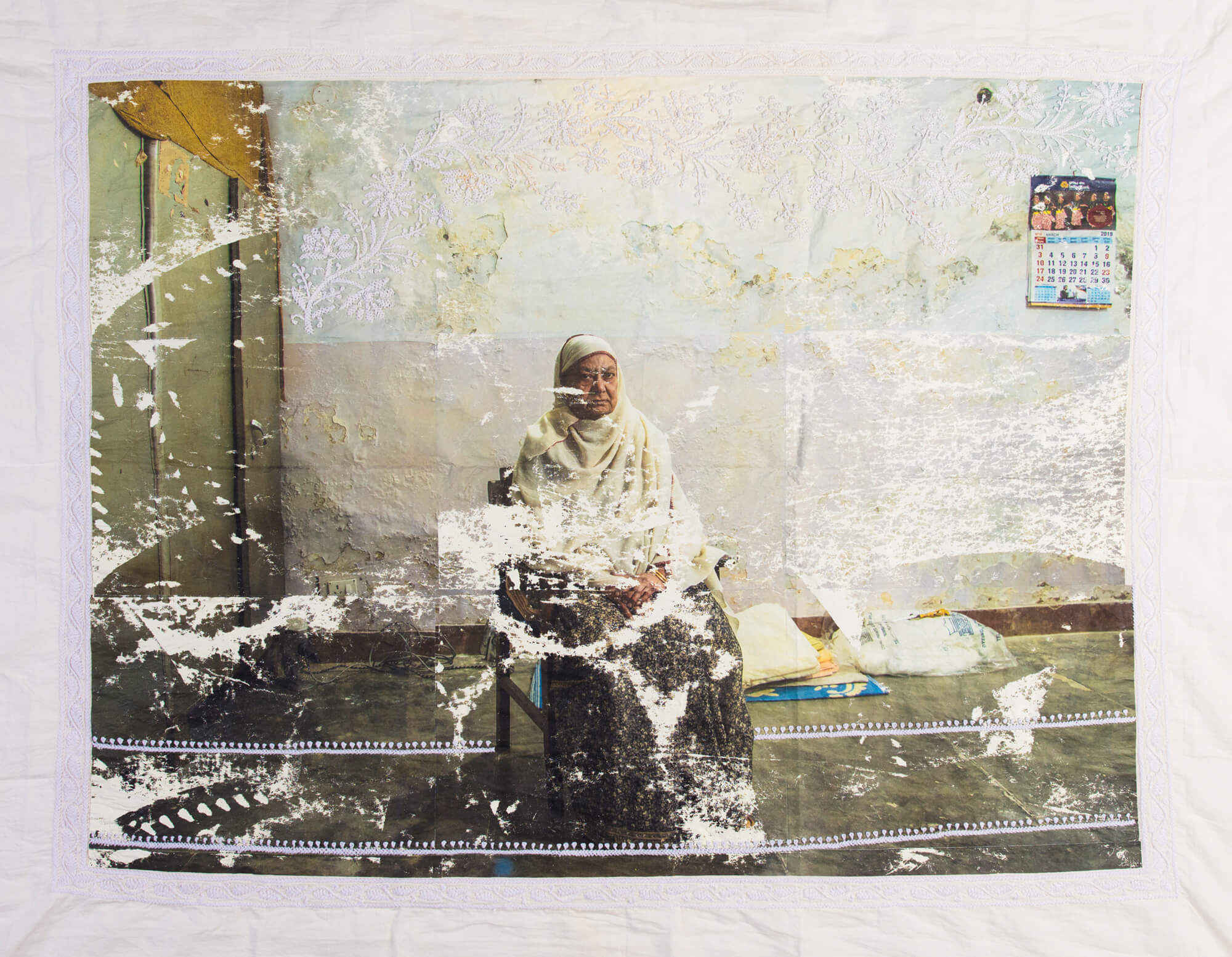
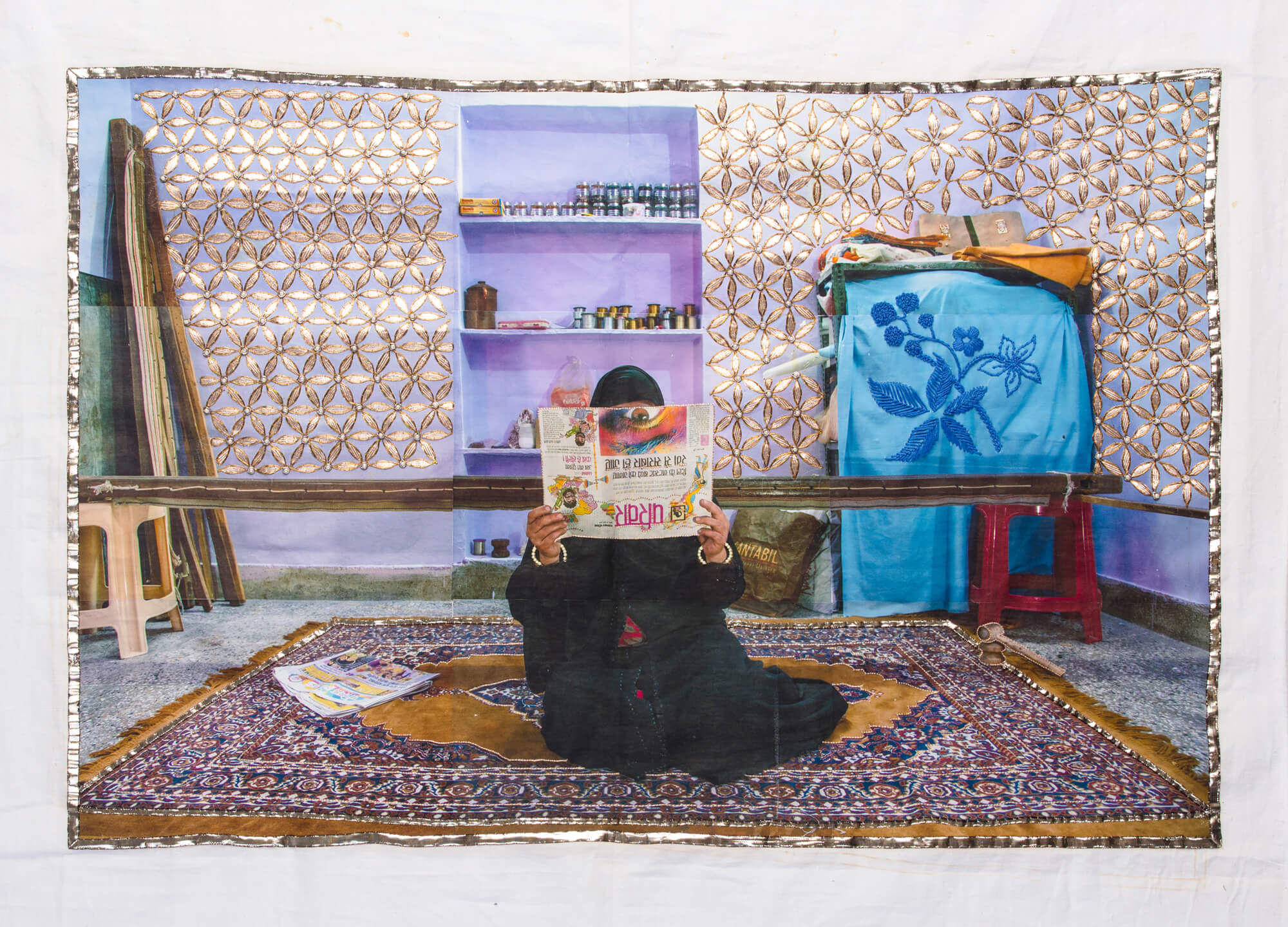
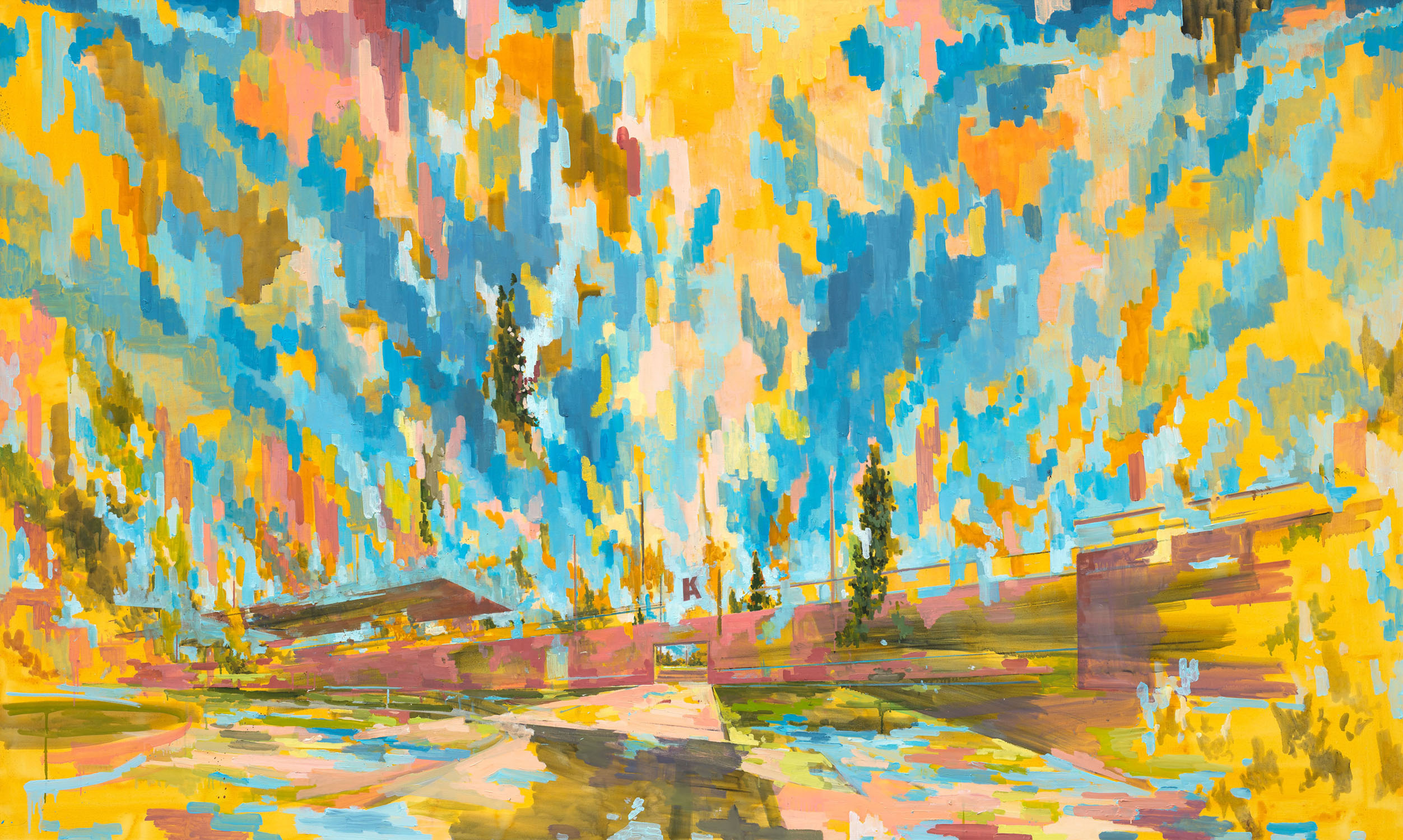
David Schnell
Born in Bergisch Gladbach in 1971, living in Leipzig
The landscape appears to be free of gravity in the real world. Its light overwhelms in brilliant yellow and azure blue; elsewhere it is soft, in gentle pastel tones. Artist David Schnell, who lives in Leipzig, breaks apart all the fixed elements that exist in a landscape. In his painting, architectural and plant fragments, geometric areas and abstract structures – underpinned by a perspective framework – create exceptionally dynamic artistic forces.
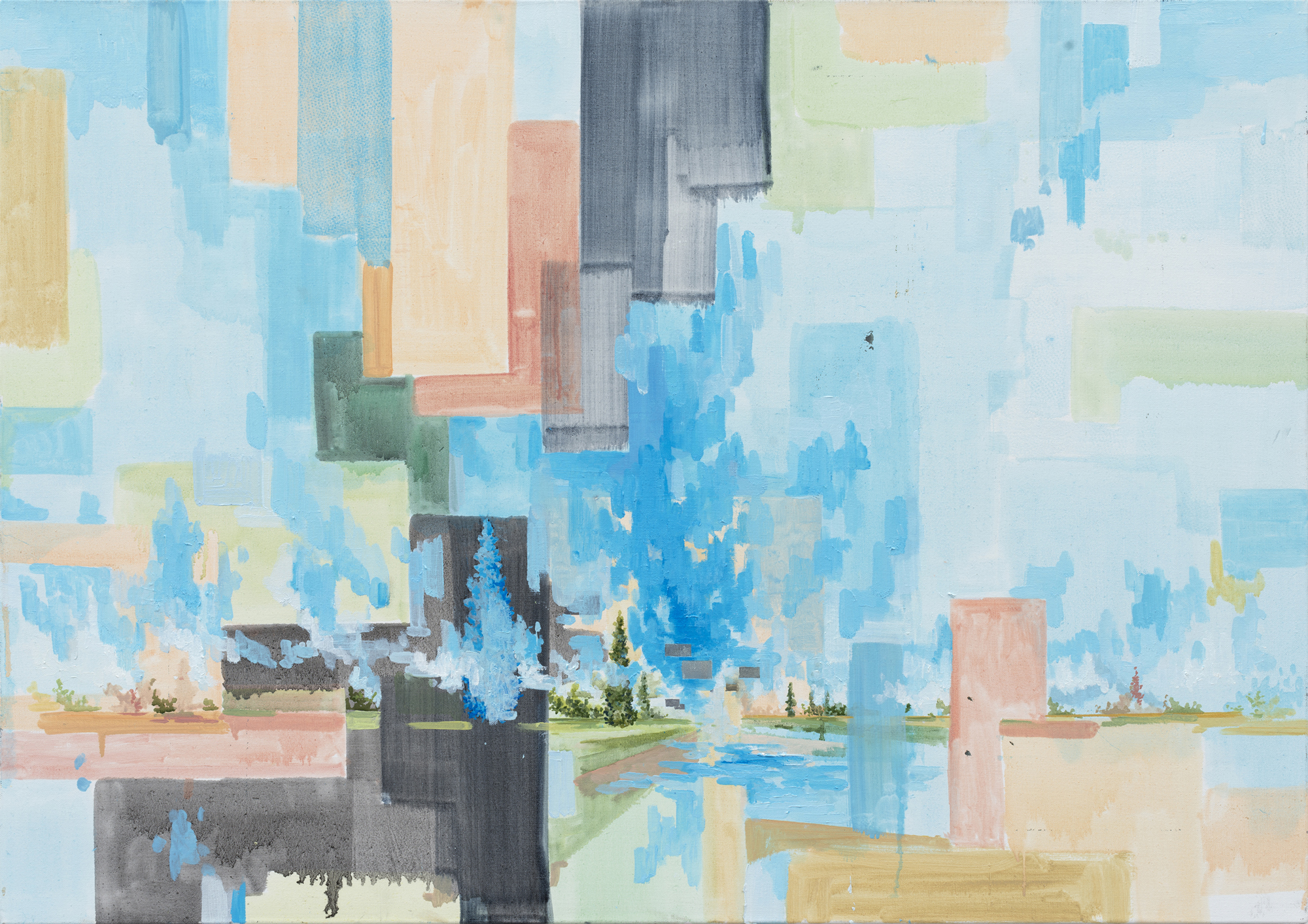
Günther Uecker
Born in Wendorf in 1930, living in Düsseldorf and St. Gallen
Does Günther Uecker’s “Spiral” bring to mind turning outward or turning inward? Is the power of the imaginary movement condensed in the middle or is that the point at which it gains its initial impulse to spread to the periphery? The shape of the spiral is recognisable even in the light base coat of the nail relief. With the carpenter’s nails that the artist drives into the board, the swirl gains a physically tangible presence. Above the metal shafts, the heads of the nails are coloured in white, so that the dynamic events also still themselves. The ambivalent interpretation of the artistic structure resonates in the harmony of stillness and movement.
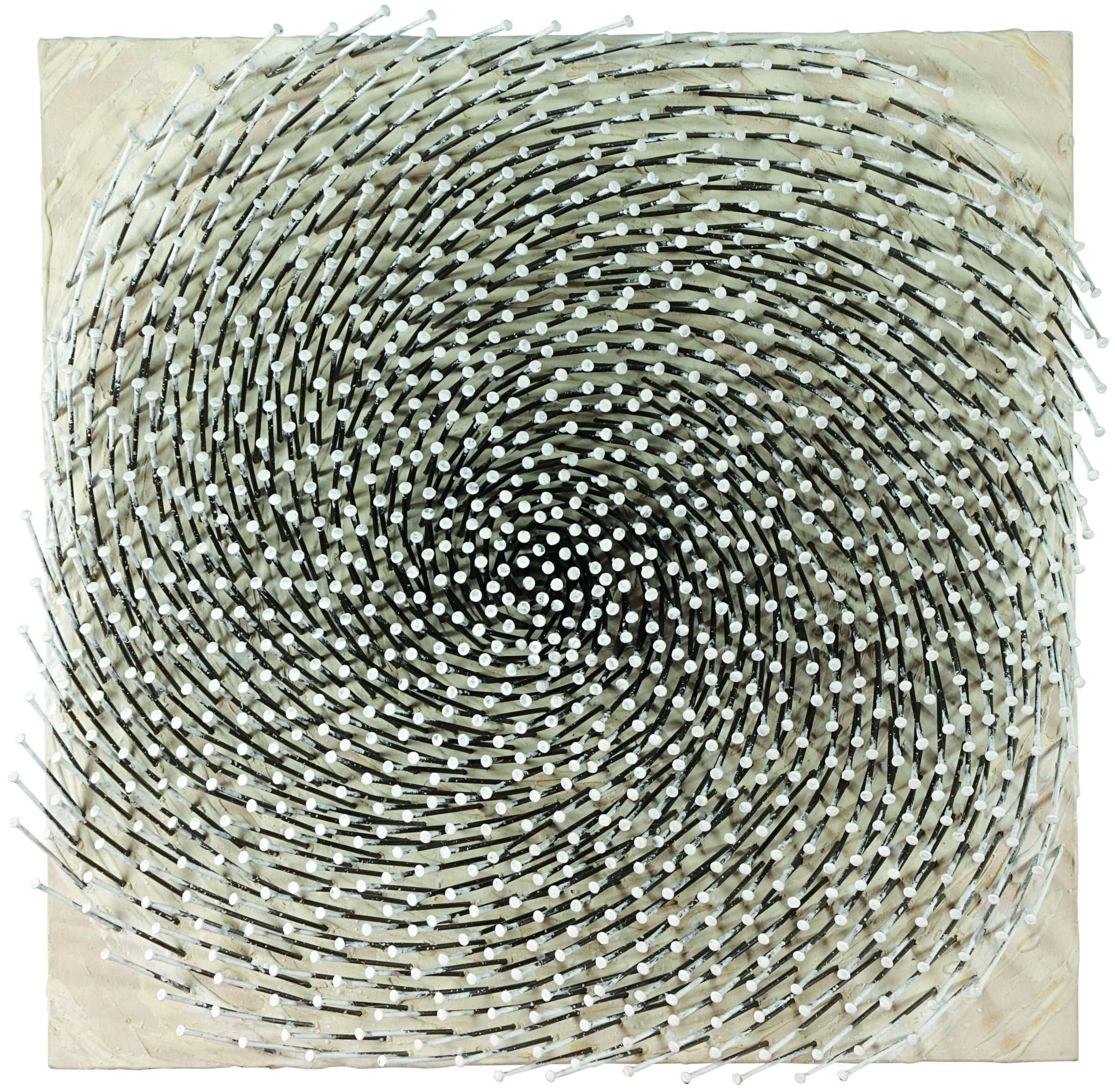
Anna Krammig
Born in Heidelberg in 1981, living in Zürich
By nature, the shadows that loom on the building walls are fleeting and incorporeal. The traces of the objective on the bright surface are transient, as their representation will immediately change when the sun moves on. In her paintings, with the ephemeral play of light and shadow, artist Anna Krammig captures the exceptional in instants and locations that are, in themselves, unspectacular. At the same time, her fine painting, applied in glazes, gives a shimmer to what is depicted, carrying away viewers’ thoughts and connecting them with timeless internal images.
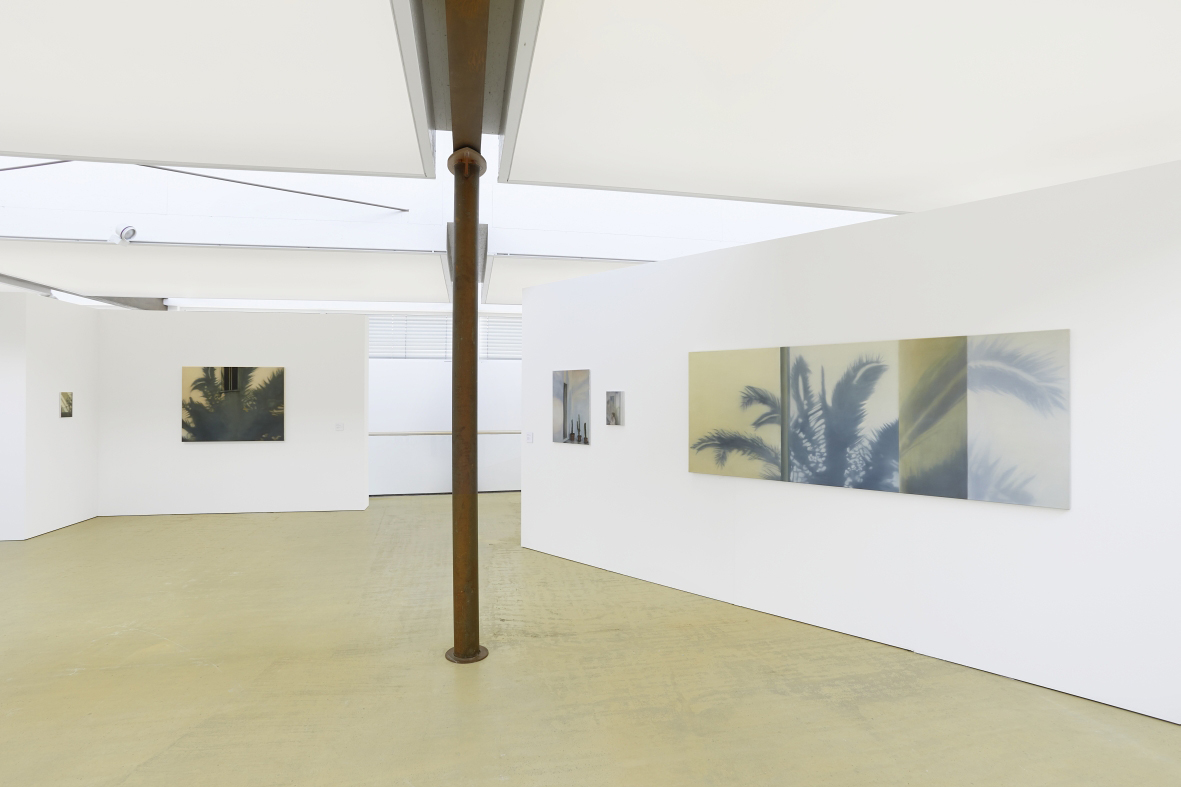
Gunter Damisch
Born in Steyr in 1958, died in Vienna in 2016
In the colour-intensive paintings of Gunter Damisch, everything seems to float. Nothing is shown as factual. The dimensions of physical sizes shift from small to large and vice versa. The smallest microbiological forms look like huge celestial bodies, interspersed with symbolic elements that span areas and expand, which the artist himself has called “fields”, “paths”, networks or “shimmers”. Each picture acts like an excerpt from a vast, cosmic world, in which one thing matters above all: to provide an open space for things and ideas to grow.
